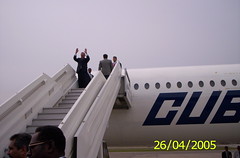Havana Cigars: A Hallmark of Cuban Tobacco

According to legends, when Admiral Christopher Columbus landed in Cuba in 1492, he sent two of his best men with introduction letters from the Catholic King and Queen of Spain to the Emperor of China, since he thought they had arrived in that Asian country.
For Rodrigo de Xerez and Luis de Torres, the two men sent by Columbus, reality was completely different when they met with aborigines holding rolls of leaves between their lips. The natives lighted one of the ends of the roll and absorbed the smoke from the other end.
That way, unintentionally, Columbus discovered one of Cuba's biggest treasures, and even some of his companions, including Xerez, became aficionados to these aromatic leaves, so the words "tobacco" and "cigar" were incorporated into the vocabulary of the inhabitants of the old continent.
Although tobacco is harvested in most Cuban provinces, the best soil for this crop is located in western Pinar del Río province - especially in Vueltabajo, which is considered the region of the world's best tobacco.
A perfect combination of soils, climate and humidity results in a product regarded as unique in the world, because of its aroma, color, texture and flavor. All these characteristics are essential when rolling the famous Havana cigars, whose demand is increasing among the most select cigar aficionados.
Cuba's cigar industry meets the needs of the most demanding cigar aficionados, with dozens of trademarks and more than 700 vitolas, all of which are high quality.
The excellent plantations in western Pinar del Río province contribute the bulk of the leaves used for the outer layers of cigars. The leaves undergo a one-year, 190-operation process before ending up in the hands of a smoker.
For cigar rollers, making a Havana cigar is like creating a work of art, which is 100 percent handmade. The process of creation begins with the selection of the leaves according to their size and class, and the characteristics of each vitola.
Experts say that the secret of a good cigar lies in a perfect mixture, where dry and light leaves are combined in the right proportion.
Growing demand for Havana cigars have led to the opening of specialized establishments where customers can enjoy an excellent vitola and where the product is preserved under ideal conditions.
As a result of this, the art of specialized cabinetmakers plays an important role in the making of wooden humidors, which protect cigars from atmospheric changes and keep their aroma and flavor, so the humidors have become treasures for both collectors and cigar aficionados.
next story: How a Cuban cigar is made



